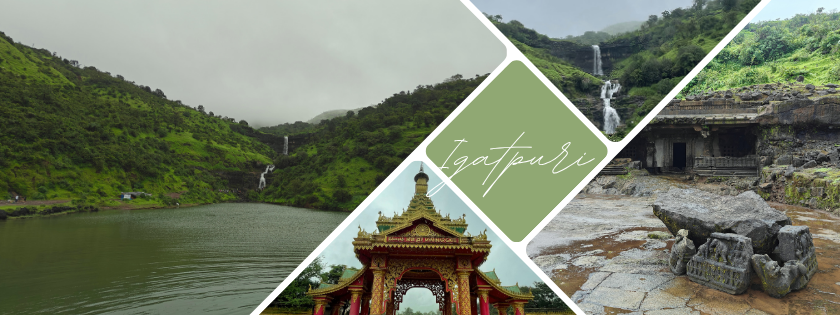To read the previous blog on day 1 of Igatpuri click here
Day 2: Exploring Igatpuri’s Hidden Gems
The next day began with breakfast at the resort before heading to Tringalwadi Fort. There is a tea shop at the base of the Fort. We parked our car near the shop and started walking. There are no signages near this parking. A few local kids offered to show the direction to the cave and asked for money in return. However, we denied to go with the kids. We spoke to some shopkeepers to understand the directions. They pointed towards one temporary shed and told us to walk in that direction. Since it was peak monsoon, we had to cross a huge pond. The depth of the pond was less. Our shoes got completely drenched in the pond. I had to pick up Sophie at a lot of places to protect her from rainwater.
We had to cross a lot of paths through paddy rice fields. But it wasn’t slippery. It was drizzling throughout the trek. After walking for 20mins, we came across a couple of blue colored signages by Archealogical Survey of India (ASI) which indicated that we are going in the right direction and we have come queit close to the cave. After crossing the signages, we could finally spot the cave at some distance. The short trek was well worth the effort, offering panoramic views of the Sahyadri range. Sophie, ever the adventurous pup, led the way, her tiny legs keeping up with our strides. It took us around 30-40 minutes to reach the caves from the parking area due to the rains. We explored the Tirthankar Adinath Jain Cave, a quiet, spiritual spot that left us in awe of its carvings.
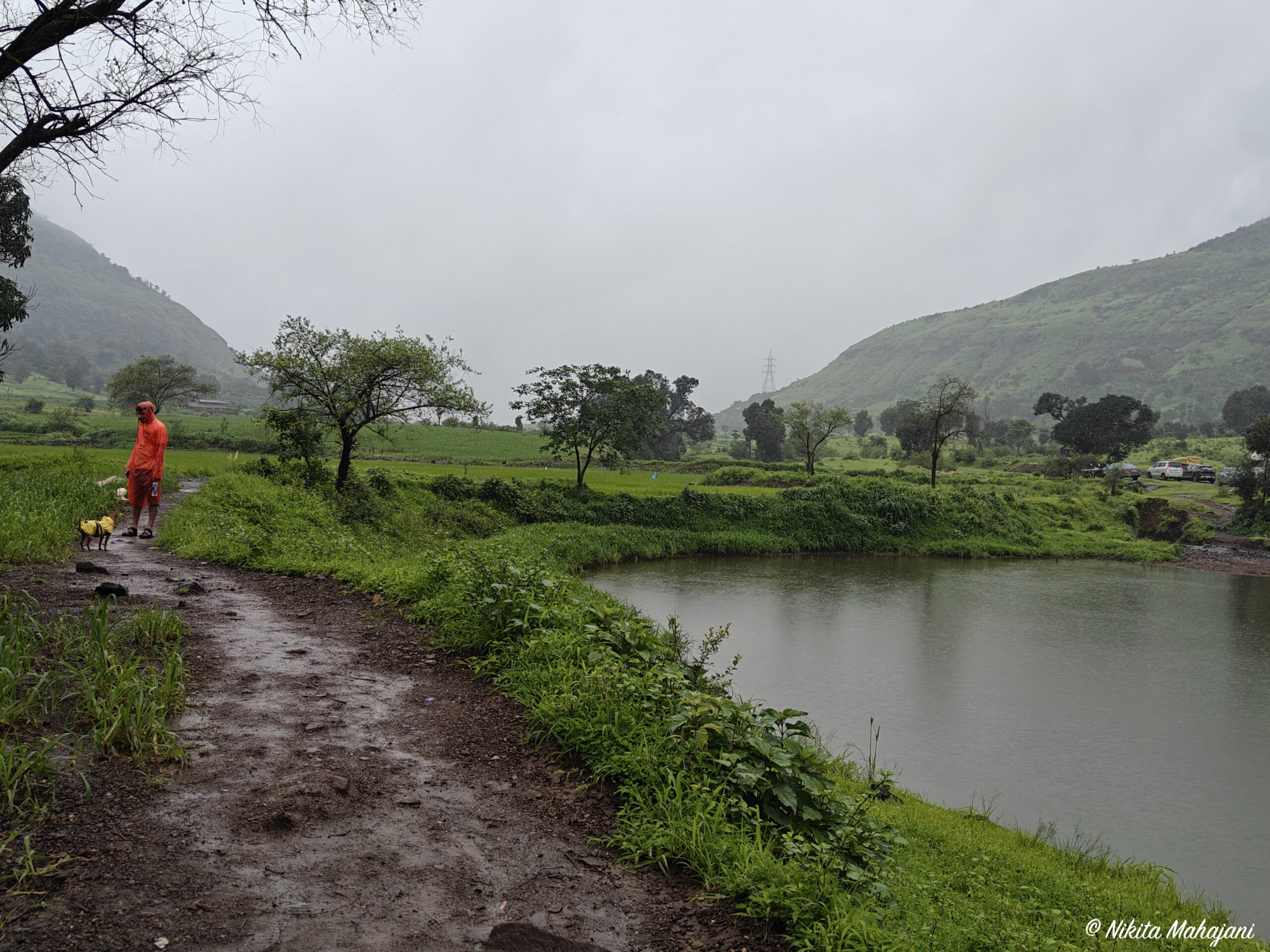
The Jain caves are carved into a rock outcrop at the base of the fort. Their entrance features a decorative carved frame, though its supporting pillars have largely disintegrated. These caves were excavated during the rule of the Yadavas, who governed the Deccan region in the 12th and 13th centuries from their capitals at Chandradityapura (modern Chandor, Nashik District) and Devagiri (modern Daulatabad, Aurangabad District).
The cave has an outer verandah with intricately carved walls, most of which have deteriorated or been destroyed. A low parapet wall runs along the verandah’s front, supporting two pillars—one on each side of the entrance—which uphold the outer eave. The main doorway was originally adorned with paintings, remnants of which are still visible.
Flanking these pillars are pilasters, with the main entrance positioned between them. Beyond the pilasters, at both ends of the verandah, there are grille windows consisting of two square bars intersecting in a grid of nine openings. These bars are finely adorned with lotus rosettes at their intersections.
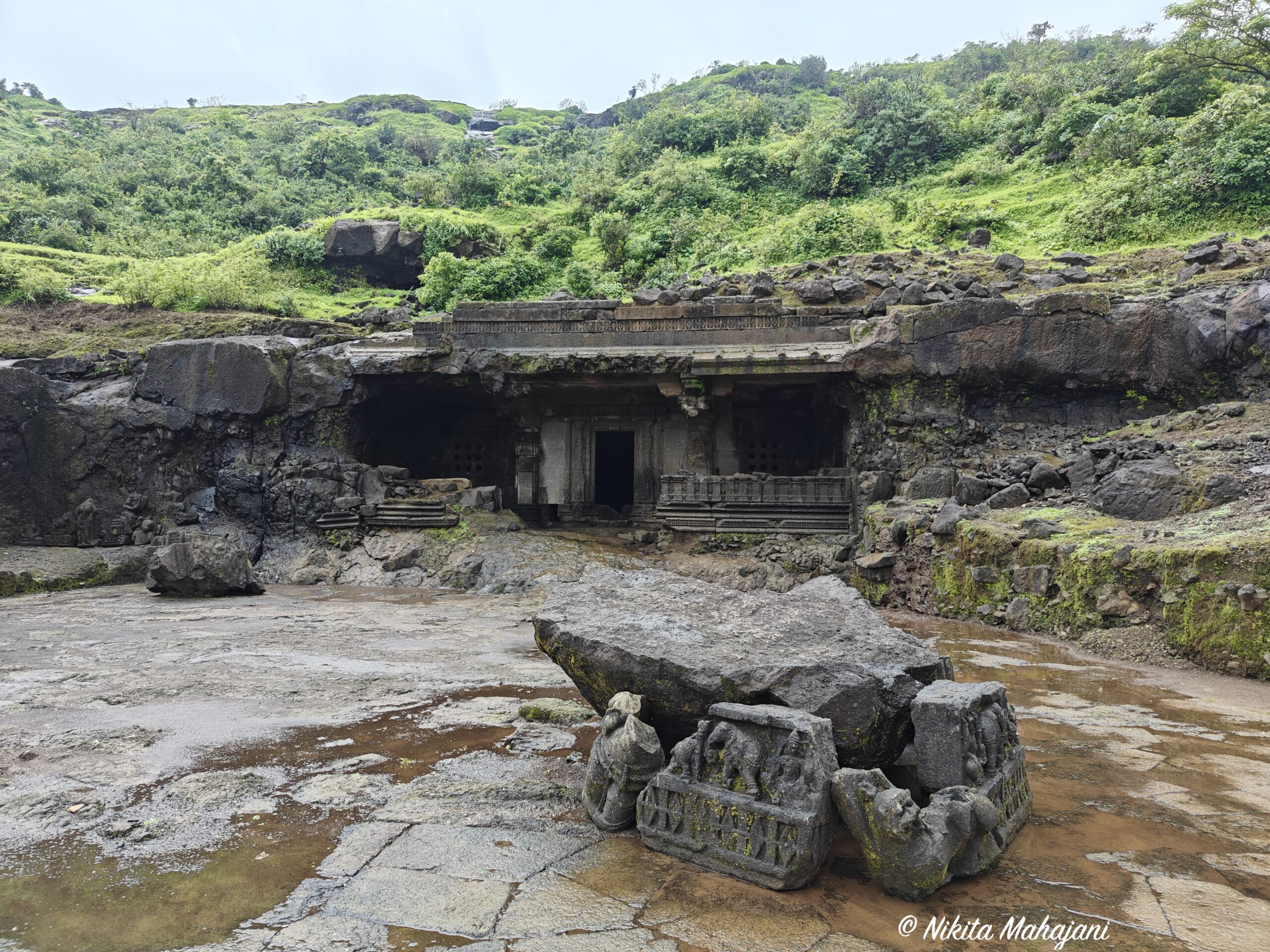
The verandah ceiling features a prominent relief carving in its center, directly in front of the entrance. This depicts a group of five figures arranged in a circle, with the central figure seemingly carried through the air by two others on either side, while two additional figures below assist in lifting.
The partition between the verandah and the inner hall is constructed from large, irregularly shaped stone blocks expertly fitted together. The spacious inner hall, measuring 35 feet square, leads to an antechamber and a shrine at its rear. The ceiling of the hall was once supported by four centrally placed columns. While the walls and ceiling are largely unadorned, the southwestern and northwestern corners contain low, continuous altars for images, whereas the northeastern and southeastern corners feature high benches, which do not serve as altars.
Of the original four columns, only the southeast pillar remains intact. The southwest pillar extends from floor to ceiling but is heavily eroded in the middle. The northwest and northeast columns have collapsed, leaving only ceiling fragments and floor stumps as remnants.
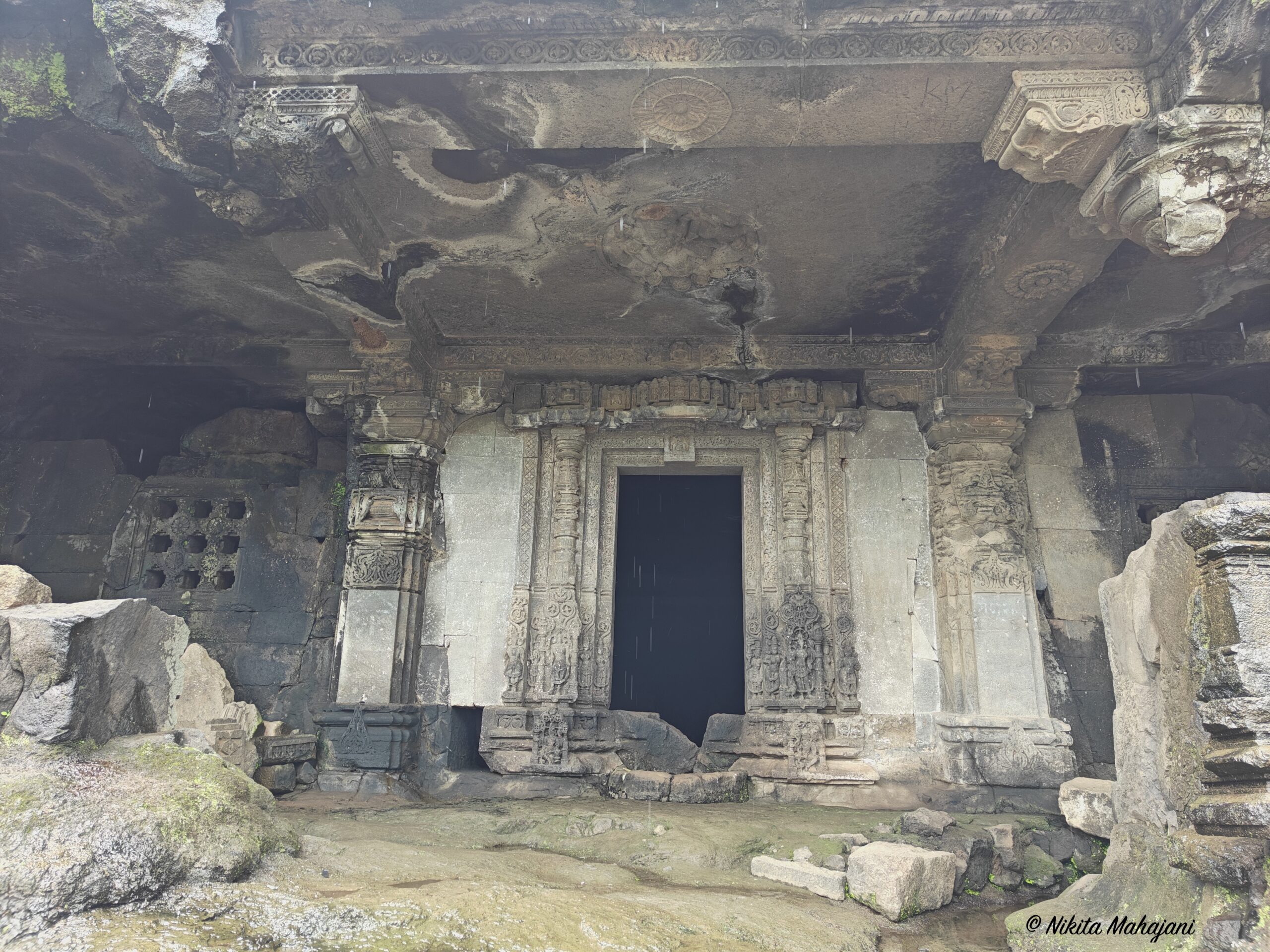
The shrine’s doorway, though deteriorated, was less ornate than the main entrance. Above it, three Jinas are sculpted on successive moldings. Inside the shrine, which measures approximately 13 by 12 feet, lies a damaged Jaina image on an altar against the back wall. The head, chest, and umbrella have been destroyed and discarded, with a portion of the umbrella found outside the cave. However, the legs and cushion remain intact, with a bull emblem at the center of the cushion identifying the image as Rishabdeva. An inscription on either side of the cushion is dated Saka 1266.
A significant inscription once adorned the northern wall of the cave, though only a small fragment of it remains. The surviving letters are finely carved and proportioned. Originally, the inscription spanned approximately four to five feet in width, though its full depth is uncertain.
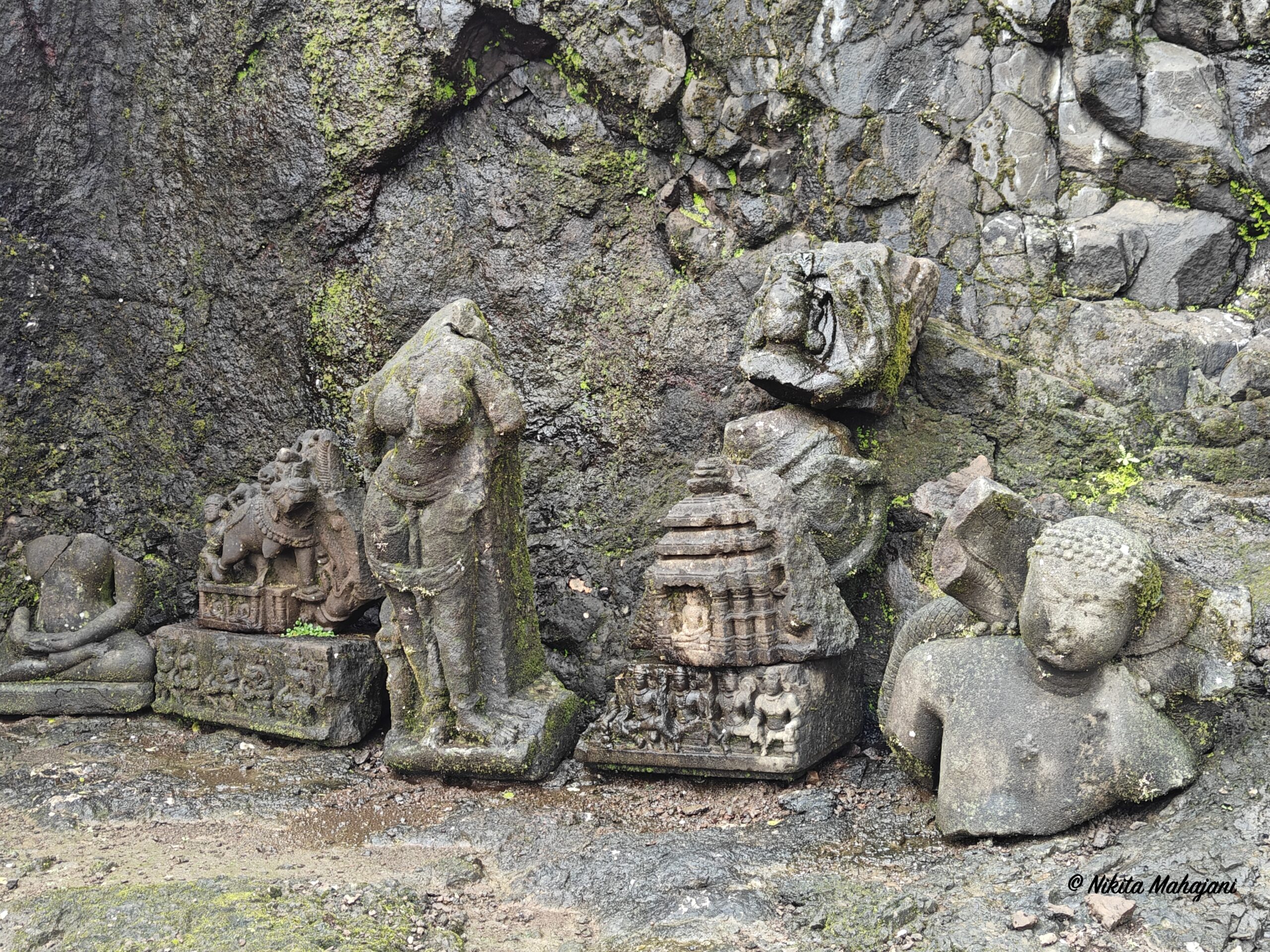
Since it had started raining very heavily, we decided not to go ahead to Tringalwadi Fort.
So we started our way back to the parking. By this time, we were super hungry. So had some steaming hot maggi at the sop in the parking. All of us were completely drenched. We had carried spare clothes and towels in the car. So dried up ourselves in the car and changed our clothes. Sophie felt extremely cozy and warm after I dried her up. She ate kibble and dozzed off in her warm blankets inside the car.
We made our way to the Myanmar Gate, a stunning structure that pays homage to Igatpuri’s connection to Vipassana meditation. The road to Myanmar gate is through a slum.
Pets are strictly not allowed at Myanmar gate. They have a huge parking lot. One of us stayed back in Sophie in the parking and we visited it alternatively. They have clean washrooms. There is nothing to see inside apart from a small exhibition hall. It’s incredible how calm the area feels, even with other tourists around. Afterward, we returned to the resort for lunch, a hearty a-la-carte meal that refueled us for the rest of the day.

Post-lunch, we had a afternoon nap for an hour and then we proceeded to Bhavli waterfall. It was drizzling at 3pm and it did not feel like an afternoon at all. The weather was amazing. We parked on the main road. The waterfall is just a 5 minutes walk from the main road. Sophie had never seen such huge waterfall and water bodies before and I could see the expression of astonishment on her face.

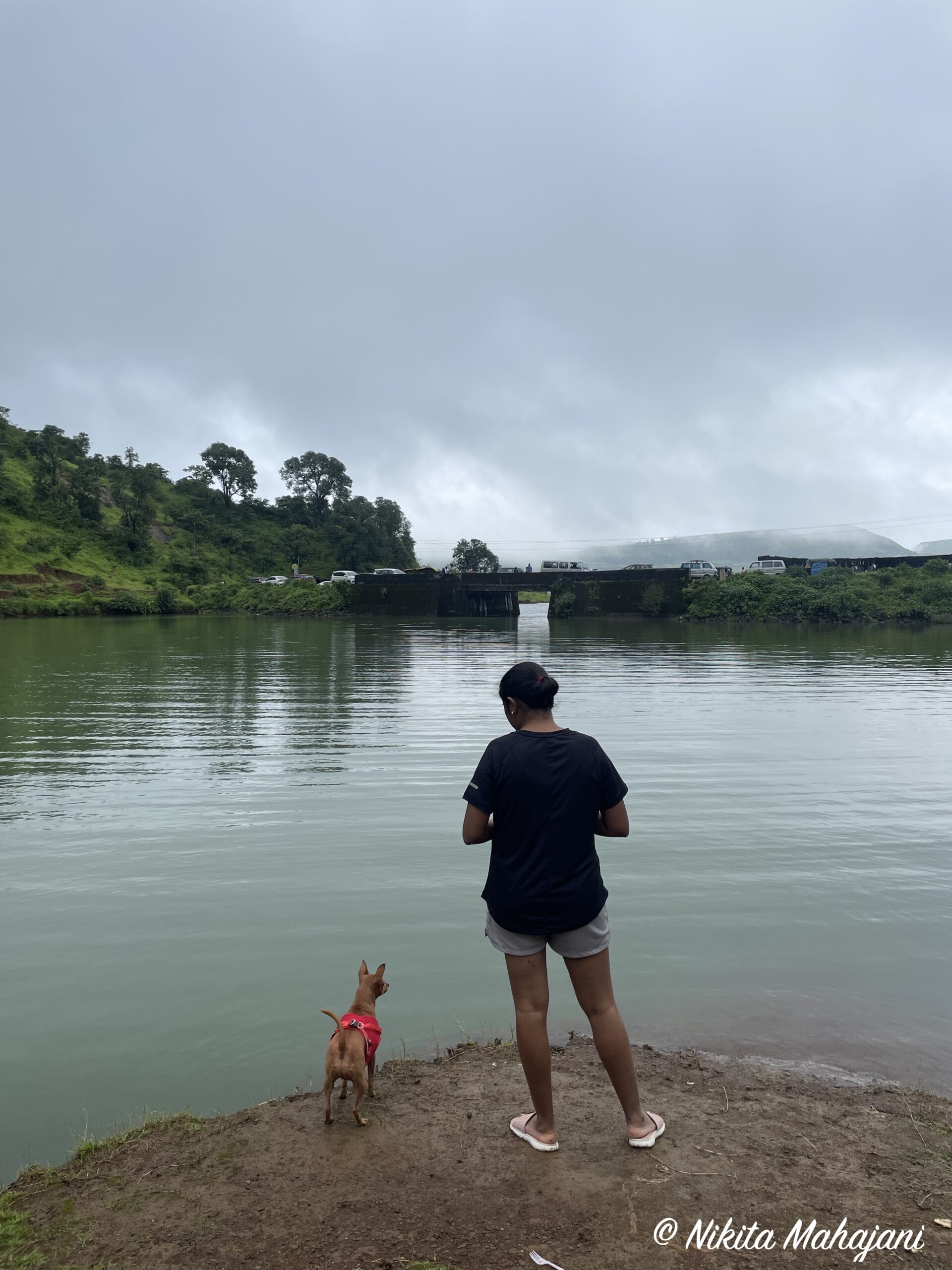
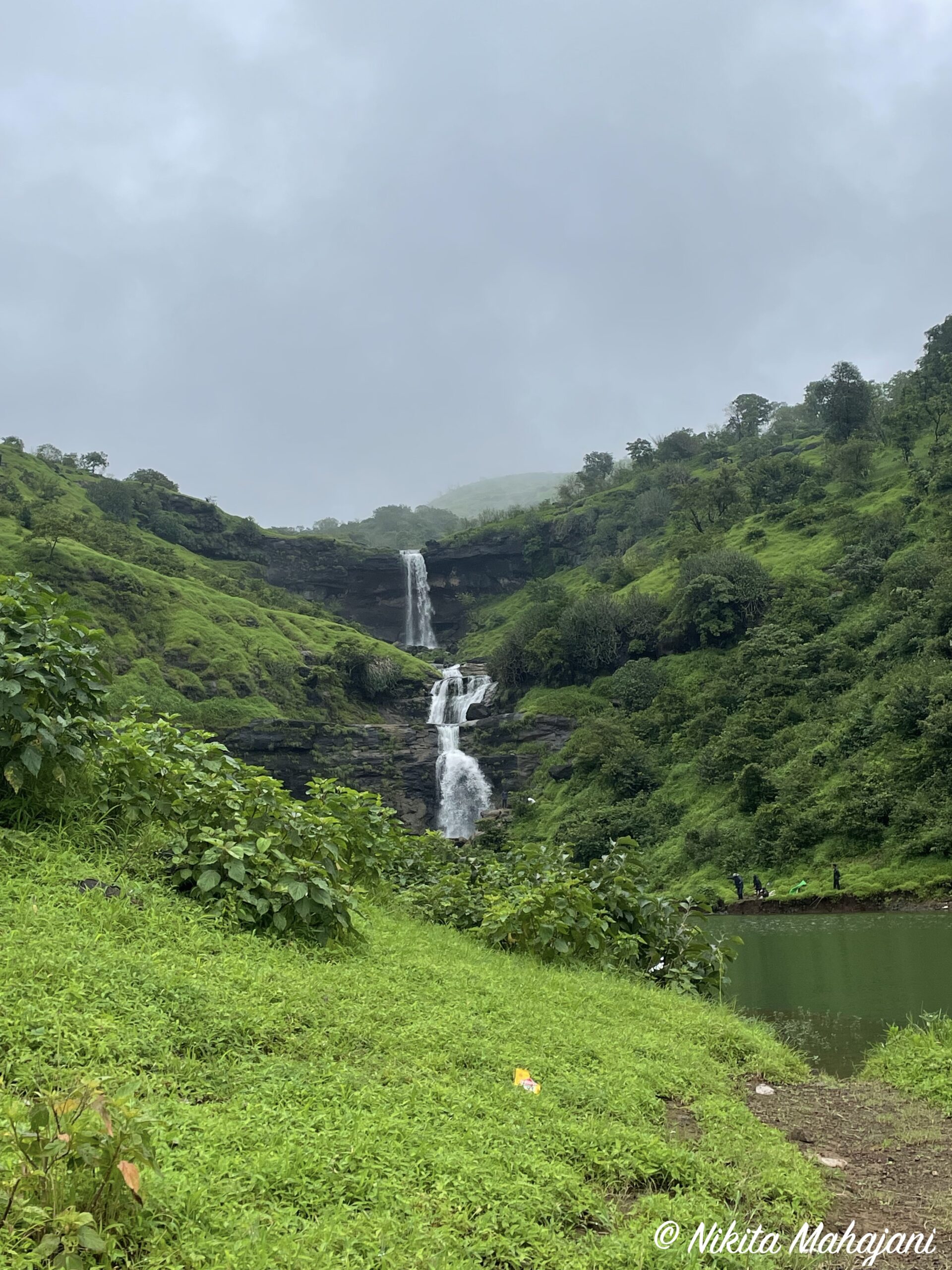
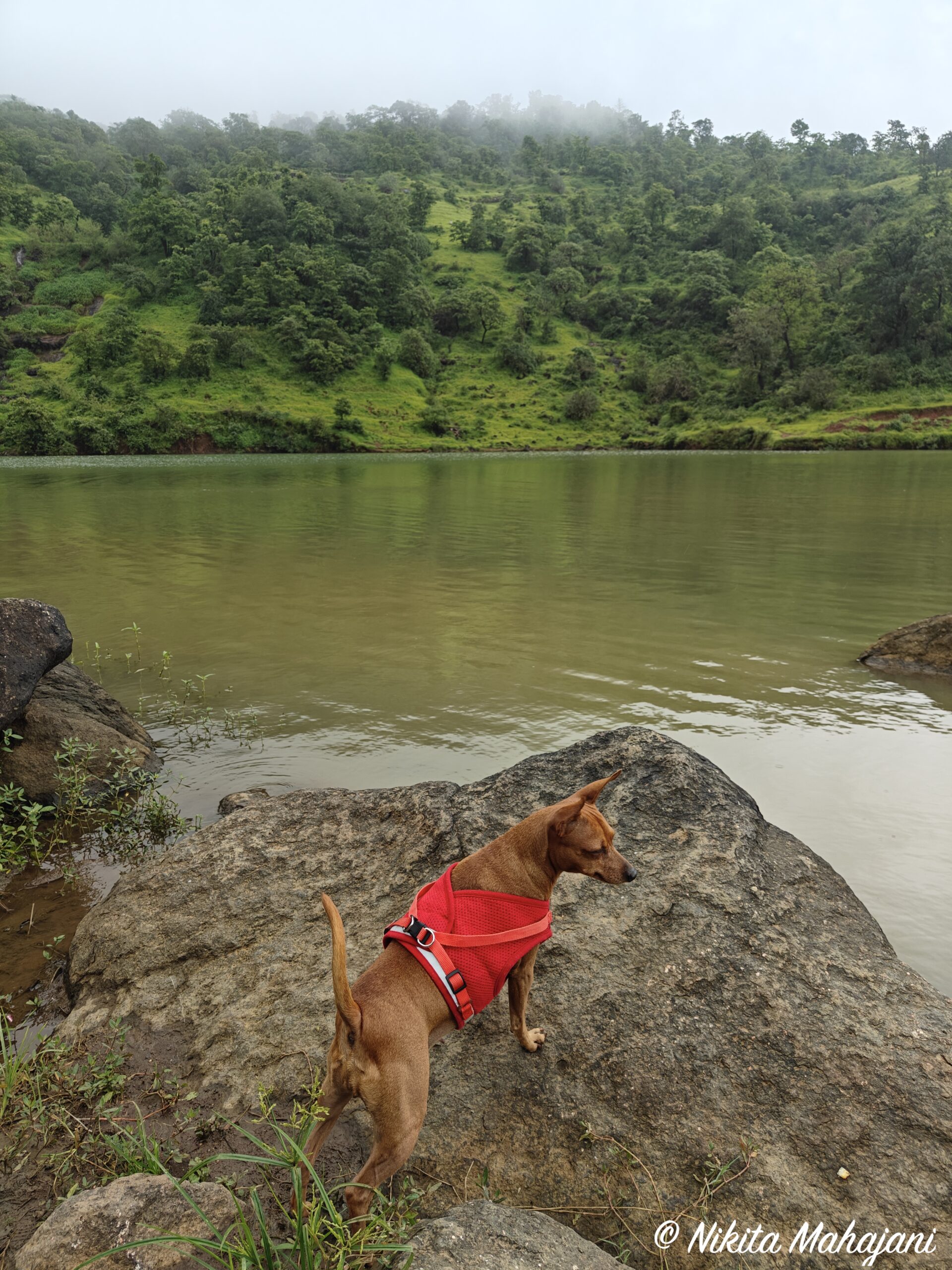
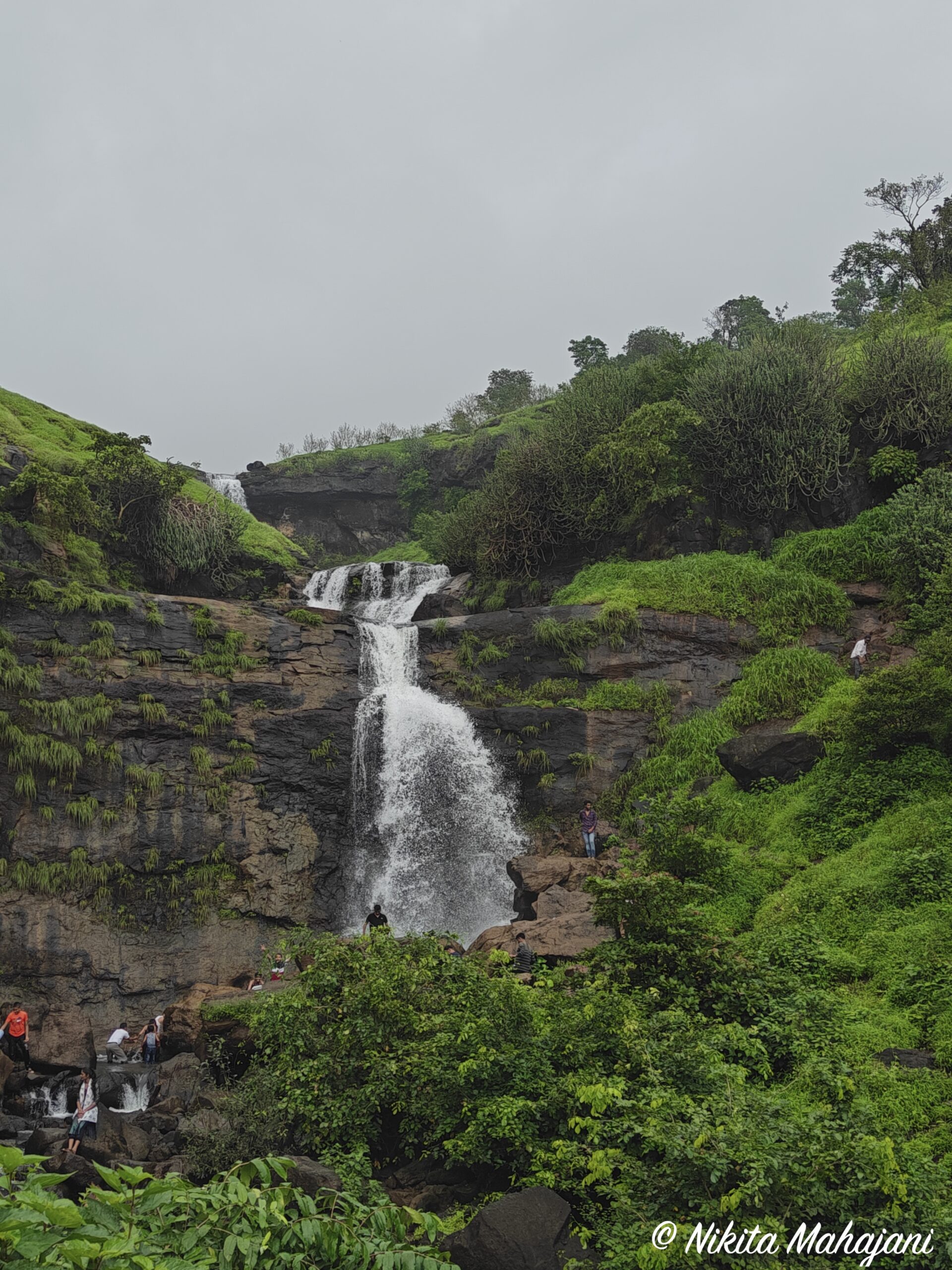
There are many other waterfalls in this area. Driving through Bhavli is a visual treat. We had some steaming hot tea and proceeded on the way back to the hotel. The day ended with a delicious desi dinner at Hotel Green Heritage.
To read the next blog on day 3 of Igatpuri-Daman click here
Where did we stay ?
Hotel Nest Beacon , Daman.
Green Heritage Resort, Igatpuri
Where did we eat ?
Hotel Shivneri Misal in Manchar
Prakriti Agro Farm, Jawhar
Envairoh, Daman
